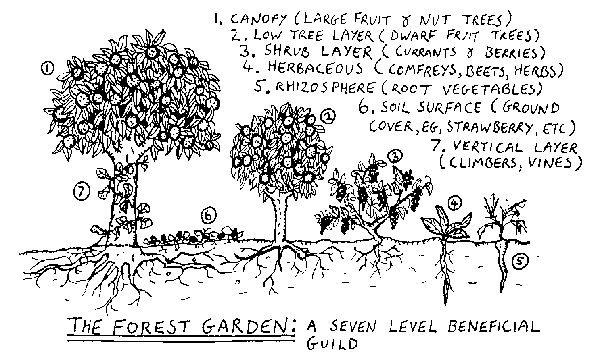
 2
2




Idle dreamer




"People may doubt what you say, but they will believe what you do."




Idle dreamer




"People may doubt what you say, but they will believe what you do."




Todd Parr wrote:I don't know if I would say it's impossible, but I think it would be extremely hard to do. Protein, fat, and calories are all very hard to come by with a strict vegetarian diet, esp if you can't grow some form of oil.
Pecan Media: food forestry and forest garden ebooks
Now available: The Native Persimmon (centennial edition)
















Idle dreamer
 3
3




Dan Boone wrote:My goal is to eat less than 10% of dietary calories from fat,
"People may doubt what you say, but they will believe what you do."
 1
1




Idle dreamer




Tyler Ludens wrote:Todd, I have also found myself feeling better on a higher-fat diet. For one thing, I won't be starvingly hungry all the time if I'm eating a lot of fat. I think it's vital for each person to attempt to work out a diet which makes them feel their best. Then trying to grow that diet at home is the great challenge. I'm far, far away from growing a complete diet; I purchase fats at the store, and to be realistic, will probably need to continue to do so.
"People may doubt what you say, but they will believe what you do."





Tyler Ludens wrote:I'm very interested in growing a complete diet, and I'm pondering if it's possible to design a temperate food forest in my climate to produce a complete vegan diet.




“The most important decision we make is whether we believe we live in a friendly or hostile universe.”― Albert Einstein

 1
1




 1
1




John Weiland wrote: Saviseeds are actually the highest source of omega-3 on the planet.
"People may doubt what you say, but they will believe what you do."




Todd Parr wrote:my climate may be as challenging as yours
Idle dreamer




Joseph Lofthouse wrote:
What are you currently buying to feed yourself that you could be growing?
Idle dreamer




Todd Parr wrote:
I have lots more to add on this later, but for now, let me just say that we are coming from such a different point of view on this that our answers probably won't help each other greatly. I am convinced now, and have been for quite some time, that much higher fat diets are healthier and more like 70% of my calories come from fats. I would never again try to eat very low fat like that, so our crop needs are going to be vastly different.
Pecan Media: food forestry and forest garden ebooks
Now available: The Native Persimmon (centennial edition)
 1
1




Tyler Ludens wrote:I'm glad (well, that's not exactly right) that I'm not the only one for whom gardening is hard. I'm sure this would be easier if I had a green thumb. My thumb is so black I can even kill easy to grow things like sunroots (trying again though!).
Pecan Media: food forestry and forest garden ebooks
Now available: The Native Persimmon (centennial edition)




"People may doubt what you say, but they will believe what you do."
 1
1




“The most important decision we make is whether we believe we live in a friendly or hostile universe.”― Albert Einstein




"People may doubt what you say, but they will believe what you do."




Idle dreamer





Tyler Ludens wrote:Not that much that will really fit in a forest garden, except maybe tomatoes.




Idle dreamer
 1
1




Tyler Ludens wrote:Will beans get enough sun in the forest garden to bear? I have beans growing in my infant forest garden, under the canopy of a large elm. It will be interesting to see if they produce any actual beans.















Gilbert Fritz wrote:From what I have heard, squirrels are a problem with nuts.
Pecan Media: food forestry and forest garden ebooks
Now available: The Native Persimmon (centennial edition)




Gilbert Fritz wrote:
What about a large greenhouse with an avocado or two?
 But, seriously, this is being done on next to no money. So I can't devise high-input systems.
But, seriously, this is being done on next to no money. So I can't devise high-input systems.Idle dreamer




Living in Anjou , France,
For the many not for the few
http://www.permies.com/t/80/31583/projects/Permie-Pennies-France#330873





Tyler Ludens wrote:
Gilbert Fritz wrote:
What about a large greenhouse with an avocado or two?
Who's going to pay for that?But, seriously, this is being done on next to no money. So I can't devise high-input systems.
 1
1




Idle dreamer




Idle dreamer









Idle dreamer




 1
1








Idle dreamer








Idle dreamer





|
Proudly marching to the beat of a different kettle of fish... while reading this tiny ad
The new purple deck of permaculture playing cards
https://www.kickstarter.com/projects/paulwheaton/garden-cards
|





